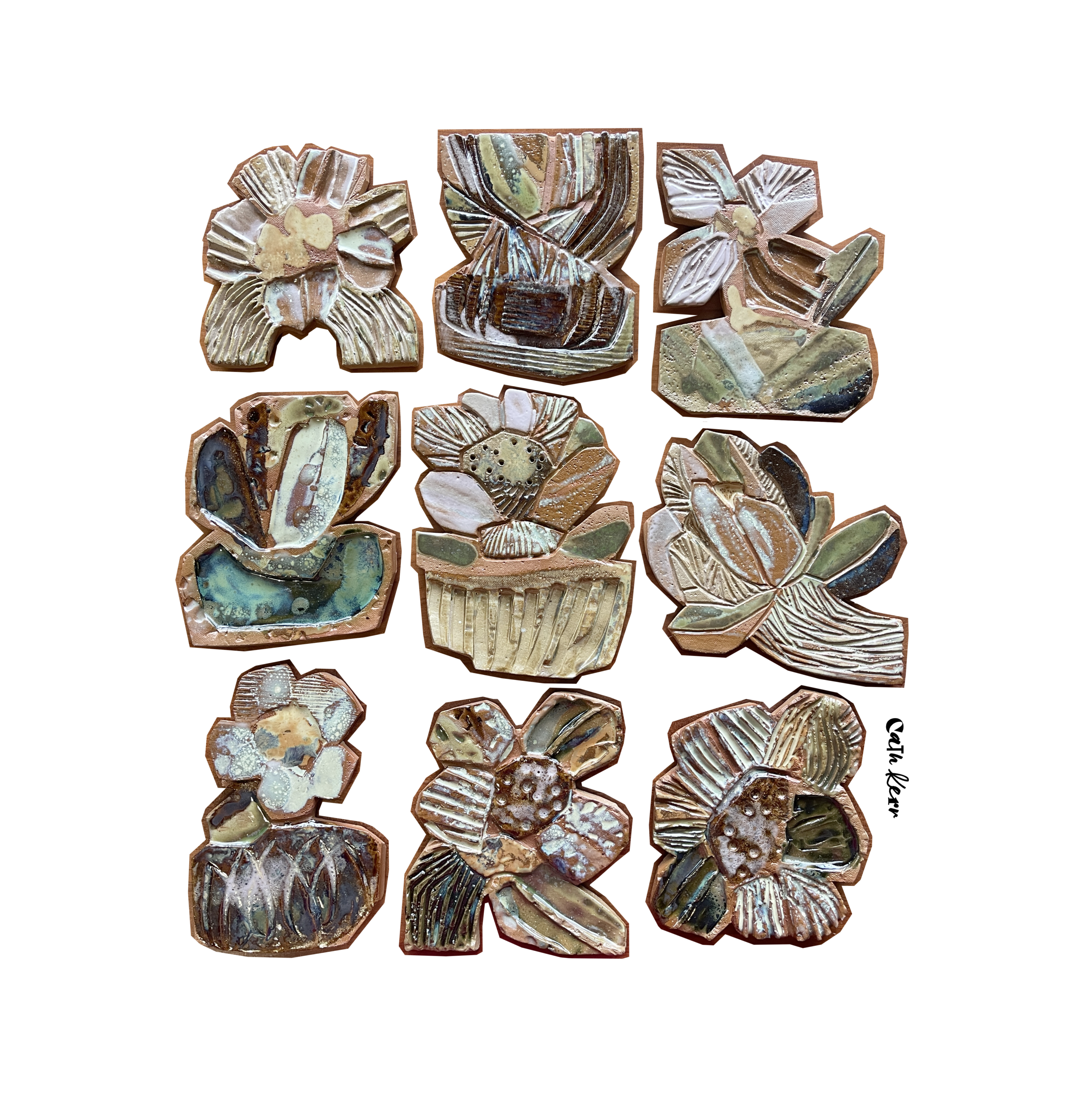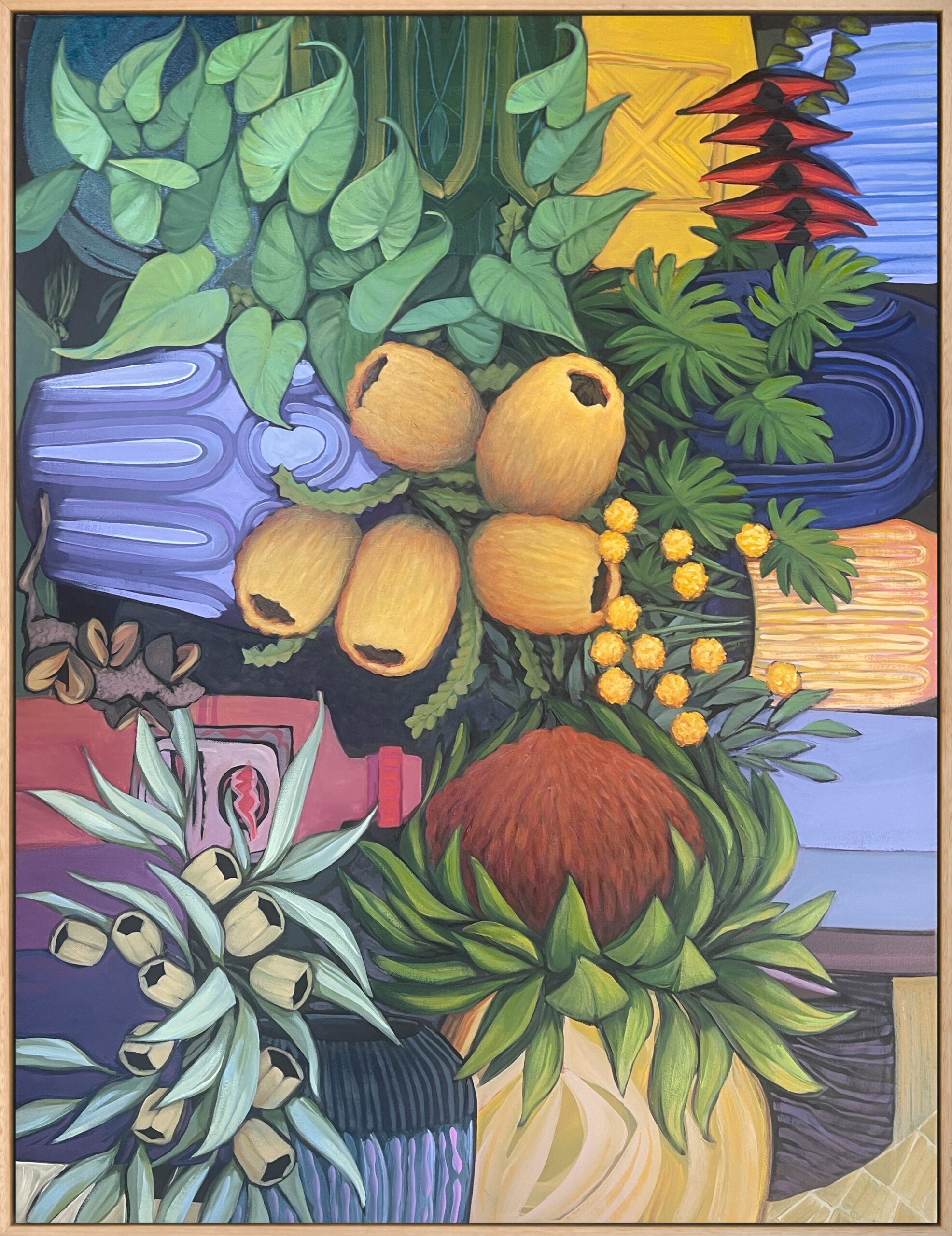
@cathkerr_artist



I’m not sure I was ever “inspired” in the traditional sense, it’s just something I’ve always done. Since childhood, I’ve been a maker, a doodler, a creative, constantly noticing patterns and seeing the world graphically. Over the past decade, painting and sculpting have become like oxygen for me, a place of nourishment where I can quiet the chaos of everyday life and focus purely on the next brushstroke, the magic of colour, composition, and form.
In recent years I’ve been questioning long-held conventions, and that curiosity has shaped my work. I asked myself: Why must still life be confined to a single plane? It doesn’t need to be. So I embraced a maximalist approach – vessels, drinks, flora, fauna, and fragments of life entering from every direction. The result is work that can be hung in any orientation, giving the collector an active role in the creative outcome.
Many pieces have. They’ve taught me that patience is a virtue I simply don’t possess… though at this point, it’s hardly unexpected!
Yes. With painting, I usually gather stimulus and plan a loose colour palette before starting. With clay, it’s far more intuitive, the form emerges almost without conscious thought. Clay feels like my “weekend” from painting, a freer space to play.
That’s always tricky. I try to stop before I risk overworking a piece, but it’s difficult to be objective when you’re deep in focus. If time allows, I’ll turn it to the wall for a while, then revisit it with fresh eyes and pay attention to my immediate reaction – whether it feels complete or still asks for more.
I try to save experimentation for when it doesn’t matter, so as little as possible! That said, even in careful planning, small surprises always creep in, and sometimes they’re the best part.
Acrylics. I adore oils too, but pragmatically, acrylics make sense for me. They allow
faster turnaround and are more practical for my process. Sometimes you need to think
like a businessperson as well as an artist.
Such a hard question! I use and love many, but my easel is probably the most essential.
That they’ve witnessed beauty – something bold, unapologetic, and full of personality.
It’s essential. I don’t just love to create, I need to. It’s as vital to me as breathing.

Columns3 months ago
Columns3 months ago
Columns3 months ago
Columns3 months ago
Columns3 months ago
Columns3 months ago
Columns3 months ago
Columns3 months ago